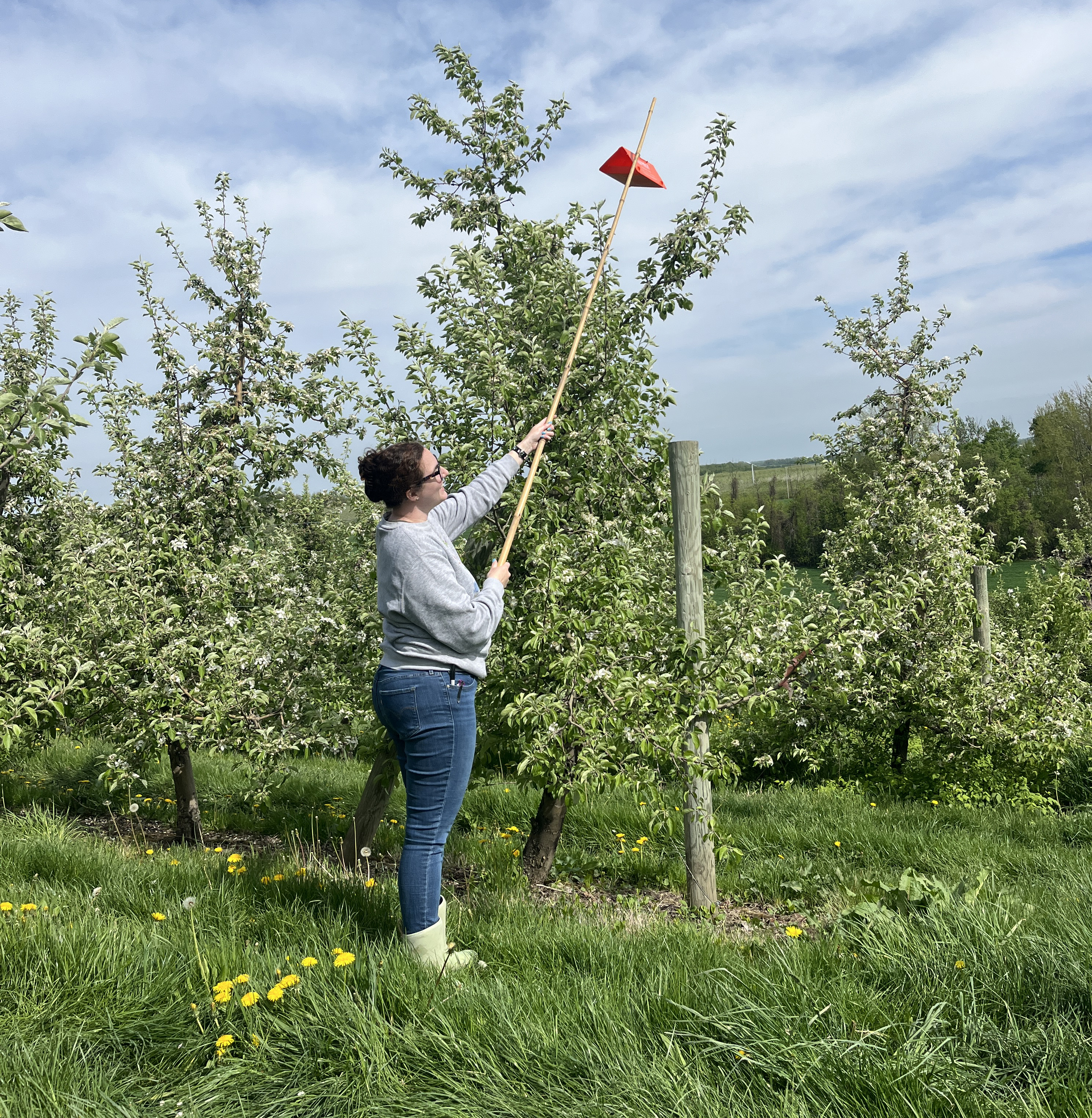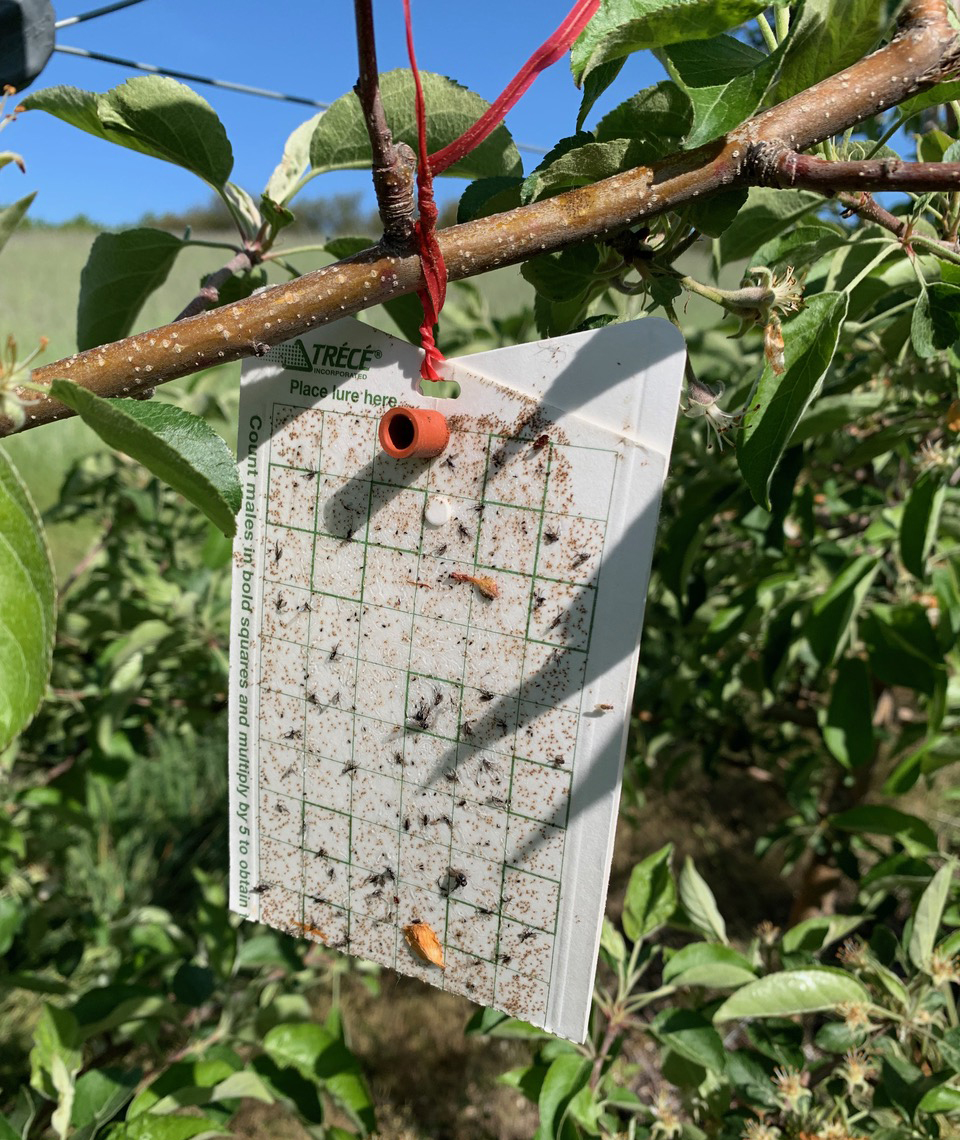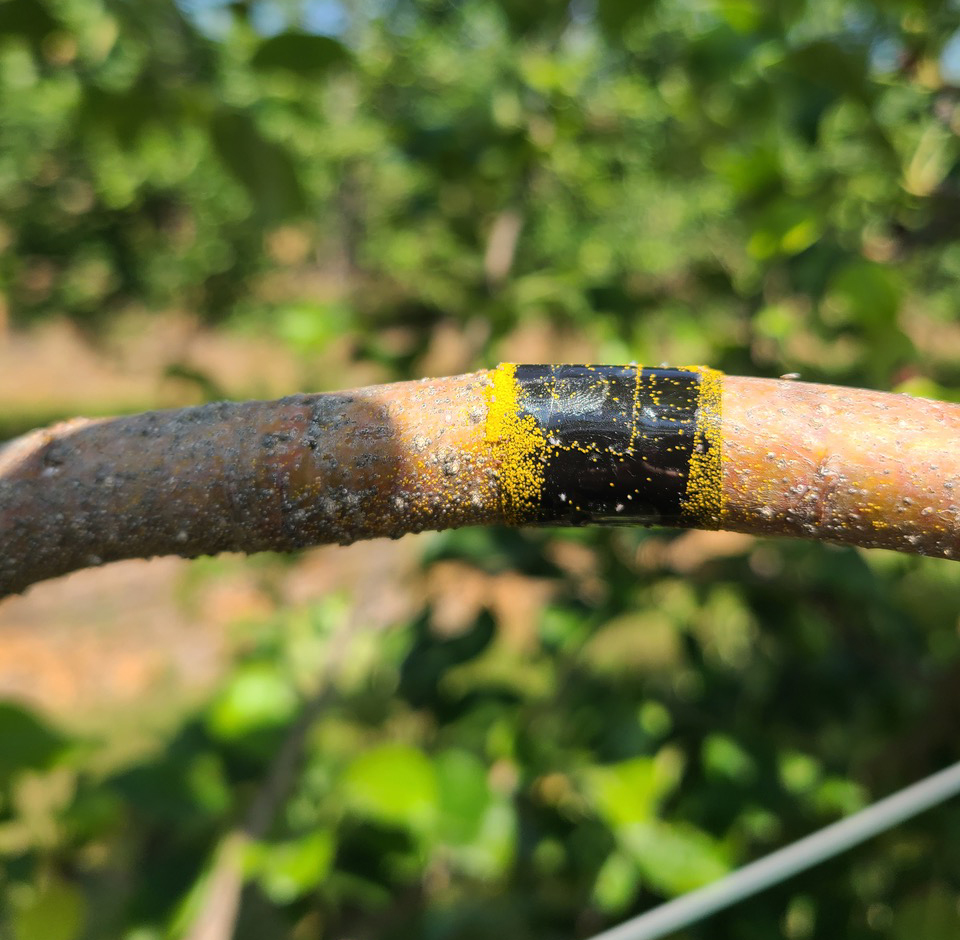Getting insect traps out early is essential for accurate management decisions throughout the season
Make sure you hang traps before the expected first flight of your target insect.

Pheromone traps are an important integrated pest management (IPM) tool to track activity and evaluate pest pressure for key orchard pests. Well-placed and maintained traps can greatly improve decision making for determining the need and ideal timing for insecticide applications. Codling moth, oriental fruit moth and San Jose scale are some of the tree fruit pests that respond to traps baited with pheromone lures. Here we briefly discuss the kinds of lures and traps to use for these three spring-active insects.
One of the main uses for pheromone-baited traps is to set a biofix used in insect development models. Getting an accurate biofix requires setting up traps early enough to determine the first date of sustained captures of males in traps. The correct biofix will ensure that a degree-day model, which uses accumulated heat units for predicting key pest life stages, will lead to accurate timing for management throughout the season. Deploy traps before the first flight starts to be able to record zero captures in your first trap check—this is generally before apple bloom.
For moth pest monitoring, there are several types of traps that can be used; however, the orange plastic delta style has become the preferred trap for codling moth and oriental fruit moth because it is reusable through several seasons, has a large trapping surface, and a removable sticky insert that is easy to replace as needed. Although delta style traps are also available in white, the orange traps are less likely to attract and trap pollinators and other beneficial insects. Never place more than one kind of lure in a trap and avoid re-using the trap with a lure for another species. The pheromones penetrate the trap material, and using different lures within a trap meant to attract different species can cause trap failure.
Setting the biofix for codling moth requires setting up a trap with the right lure at the pink bud stage. The right lure depends on whether mating disruption products are being used to suppress codling moth. In orchard blocks that are not under mating disruption, the 1x lure can be used for both setting a biofix and monitoring for action thresholds. In orchard blocks that are under mating disruption, use a trap with a 10x lure to set your biofix, but then use the 1x lure when monitoring for thresholds. Hang traps in the upper third of canopy, in areas with expected high pressure, one trap for every 2 acres. In large uniform blocks, one trap for every 5-10 acres is acceptable.
For more details on deploying traps for codling moth, visit “Codling moth management options for Michigan apples” by Michigan State University Extension. You can access the codling moth degree-day model on Michigan State University (MSU) Enviroweather.

Oriental fruit moth traps can be placed at a comfortable height for visual inspection. Avoid using outside tree rows for pheromone traps. Place oriental fruit moth traps three to four rows in, at least 25 feet apart and at a density of one trap per 10 acres. A degree-day model for oriental fruit moth is available on MSU Enviroweather.
For San Jose scale, a sticky trap that folds back on itself secured with a large twist tie is baited with a San Jose scale lure inserted into the hole at the top of the trap. San Jose scale traps are hung about mid-canopy. Male San Jose scale are tiny with yellowish brown bodies crossed by a dark band, but will appear as tiny light brown specks when caught on a trap. In orchards with high San Jose scale pressure, hundreds of these light brown specks may be seen on a single trap during male flight. Sometimes you can see the band with the naked eye, but a hand lens or a dissecting scope will make it a lot easier to see them.
Delta trap liners used to monitor moths can continue to be used for subsequent weeks if captured moths are removed after counting and other insects and debris are removed from the trap each time you check it. Trap bottoms should be changed when they are dirty. Once V-traps have captured San Jose scale, they should be replaced. Follow manufacturer’s directions for changing lures, but in general, change lures each generation. Used lures and lure packaging should be removed from the orchard, not dropped on the ground. Keep delta trap entrances clear of foliage and hang V-traps to minimize foliage sticking to the traps. Hang bright, colored flagging tape on the trees where the traps are located, on the end of the row and make a written reference or map for yourself so you can find the traps again as the season progresses.

For codling moth and oriental fruit moth monitoring, traps should be used together with visual inspections of fruit to look for signs of infestation or injury. For San Jose scale, determining timing of the crawler stage can be done by locating and flagging several branches with visible scales and then inspecting these branches when the model predicts crawlers. Black electrical tape wrapped with sticky side out can also be used to monitor for crawlers. Crawlers are tiny and yellow and will look like grains of bright yellow pollen when stuck to the tape but will lose that bright color when they die. Spotting crawlers takes a keen eye with a hand lens.

New “Insect and Disease IPM Scouting Guide for Michigan Apples” is now available for free Michigan apple growers! This scouting guide was designed as a pocket field book for easy use in the orchard or for quick reference. It provides information to help identify pests, beneficials and pest damage with some guidelines for monitoring. Contact your regional MSU Extension educator or email Jackie Perkins at albertj9@msu.edu to get your copy.



 Print
Print Email
Email


